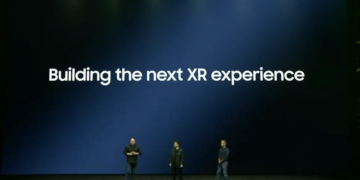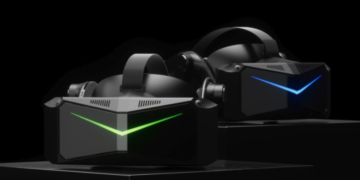Introduction
Virtual Reality (VR) gaming has evolved significantly, offering immersive experiences beyond traditional gaming. If you want to develop your own VR game, this guide will take you from the basics to a professional level.
1. Understanding the Basics of VR Game Development
What is Virtual Reality?
Virtual Reality is a digital, interactive 3D environment that users can enter using devices like VR headsets (Meta Quest, HTC Vive, PlayStation VR, etc.).
Basic Requirements
Before starting, you need:
- A powerful computer that supports VR development.
- A VR headset (such as Oculus Quest or HTC Vive).
- A game engine (Unity or Unreal Engine).
- A programming language (C# for Unity or Blueprints/C++ for Unreal Engine).
2. Choosing the Right Tools
1. Game Engines: Unity vs. Unreal Engine
- Unity: Ideal for beginners, supports C#, has a large community and an extensive asset library.
- Unreal Engine: Offers high-quality graphics, uses C++ and Blueprints, ideal for advanced games.
2. Development Hardware
- Meta Quest 2/3
- HTC Vive
- PlayStation VR
- Valve Index
3. Programming Languages
- C# if working with Unity.
- C++ and Blueprints if working with Unreal Engine.
3. Building Your First VR Project
1. Setting Up a VR Environment in Unity
- Download and install Unity (a VR-supported version).
- Add XR Plugin Management to enable VR support.
- Set up a VR camera using XR Rig.
- Add movement and interaction controls using the XR Interaction Toolkit.
2. Creating a VR Environment in Unreal Engine
- Open Unreal Engine and create a new VR project.
- Set up a VR Pawn with Blueprints.
- Enable movement using Motion Controllers.
- Add interactive objects to the environment.
4. Developing Gameplay Mechanics
1. Movement in VR Environments
- Teleportation: Ideal for motion sickness reduction.
- Smooth Locomotion: Uses the joystick for continuous movement.
2. Interacting with Objects
- Picking up and throwing objects.
- Using in-game menus within VR.
- Interacting with Non-Playable Characters (NPCs).
3. Developing Combat or Puzzle Systems
- Adding a VR aiming system for weapons.
- Designing puzzles that require real movement.
5. Enhancing User Experience (UX) in VR
- Reduce motion sickness by maintaining a 90+ FPS frame rate.
- Use VR-friendly UI/UX design.
- Optimize graphics quality while maintaining performance.
6. Testing and Refining the Game
- Use a VR headset for real-time testing.
- Gather player feedback and optimize performance.
- Fix bugs and improve AI interactions if applicable.
7. Publishing and Marketing the Game
- Release the game on Oculus Store or SteamVR.
- Use platforms like Itch.io to showcase a demo version.
- Promote via YouTube, TikTok, and Reddit to attract the VR gaming community.
Conclusion
Developing a VR game from scratch requires learning and practice, but with the right tools and planning, you can reach a professional level and create a successful VR game.







